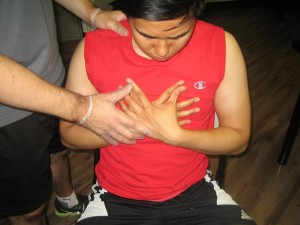An unstable angina or heart attack occurs if there is a sudden blockage in a coronary artery which depends on the degree and location of the blockage. The normal heart rate is 60-80 beats per minute but it is altered during an attack due to the disrupted flow of blood. The heart rate during a heart attack tends to vary from too slow or fast or even palpitations and skipped beats. The location of the blockage in the heart has a connection on the type of heart rate. You can learn more about the management of this condition by enrolling in a first aid class.
Bradycardia
A sluggish heart rate is quite common during an attack. Bradycardia is a heart rate below 60 beats per minute and often with a heart attack that is linked with angina or chest pain. In case the heart rate is too sluggish, often below 40 beats per minute, it can lead to dizziness, passing out, difficulty in concentrating or severely low blood pressure. Take note that bradycardia is usually caused by disruption in the normal electrical impulses that control the rate of the pumping action of the heart. Various factors can cause or contribute to issues in the electrical system of the heart.

Tachycardia
Take note that tachycardia is a heart rate that is faster than normal. A healthy adult heart beats 60-100 in a minute when an individual is at rest. If the individual has tachycardia, the rate is drastically increased in the upper or inferior chambers of the heart. The heart rate is regulated by the electrical signals transmitted across the heart tissues.
Tachycardia develops when an anomaly in the heart generates rapid electrical signals. During a heart attack, damage to the heart muscles can cause it to accelerate, but the damage sustained means that the fast contracting heart only pumps minimal blood. Always bear in mind that tachycardia can drastically disrupt the normal functioning of the heart, increase the risk for a stroke or even cause sudden cardiac arrest.
Heart blocks
A deadly type of heart rate that can occur during a heart attack is a heart block. Take note that there are various forms of blocks with each causing increasingly severe symptoms. When a heart attack occurs, regions of the electrical conduction scheme can end up damaged or blocked. Once the electrical signal is disrupted or altered, beating in an organized manner creates a delayed heart rate response. The heart blocks are slow in rate and often linked with poor perfusion to the body that causes loss of consciousness.
Premature ventricular contractions
Premature ventricular contractions can occur during a heart attack but common and usually benign in individuals who have healthy hearts. During a heart attack, once the heart sustains damage due to lack of blood, it becomes irritable in which PVC can occur.
If it occurs in a chain, it is known as couplets and can lead to the pounding sensation in the chest. Premature ventricular contractions are the surplus erratic heartbeats that start in one of the two inferior ventricles in the heart. Take note that these additional beats can disrupt with the regular heart rhythm. If the PVC is frequent, the greater the heart rate will become, thus this is often linked with a higher heart rate. Nevertheless, PVCs can be seen with any heart rate.
